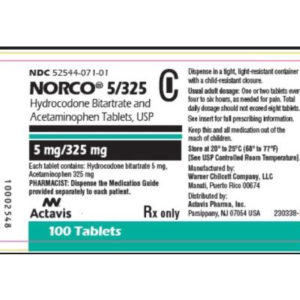

NORCO GENERIC NAME UPDATE
The agency is required to update the list quarterly. Section 505(t) is titled “Database For Authorized Generic Drugs,” and requires that FDA publish a complete list on its Internet site of all authorized generic drugs, including (1) the drug trade name, (2) the brand company manufacturer, and (3) the date the authorized generic drug entered the market. Among other things, FDAAA added new subsection (t) to section 505 of the Federal Food, Drug, and Cosmetic Act (the Act). On September 27, 2007, the President signed into law the Food and Drug Administration Amendments Act (FDAAA) (Public Law 110-85). Statutory History and Legal Definition for Annual Reports FDA publishes a list of reported authorized generics and updates that list quarterly. Listing of Authorized Generic DrugsĪs part of their required annual reports, NDA holders must notify the FDA of any authorized generic drugs marketed under their approved NDAs. The NDA holder may market both the authorized generic and the brand-name product at the same time. While a separate NDA is not required for marketing an authorized generic, FDA requires that the NDA holder notify the FDA if it markets an authorized generic. This is true even if the brand-name drug is “single source,” meaning there are no ANDAs approved for that product, or coded as non-equivalent (e.g., BN) by FDA in the Orange Book. An authorized generic is considered to be therapeutically equivalent to its brand-name drug because it is the same drug. Because an authorized generic drug is marketed under the brand name drug’s New Drug Application (NDA), it is not listed in FDA’s Approved Drug Products With Therapeutic Equivalence Evaluations (the Orange Book). In addition, an authorized generic version of a tablet or capsule may have a different color or marking. Therefore, it is generally less costly to obtain approval of a generic drug than a brand name drug.Īn authorized generic drug is the same as the brand-name drug but does not use the brand name on the label. Instead, the applicant relies on FDA’s finding that a previously approved drug product is safe and effective. An ANDA applicant is not required to provide independent evidence of the safety and effectiveness of a proposed generic drug. A generic drug must also meet the same standards of quality and manufacturing as the brand name drug. To obtain approval of a generic drug, a company must submit an Abbreviated New Drug Application (ANDA) to FDA and prove that its product is the same as the brand-name drug in the ways described above, and that it is “bioequivalent,” meaning it gets to the part of the body where the drug works at the same time and in the same amount. However, a generic drug may have certain minor differences from the brand-name product, such as different inactive ingredients. A generic drug is the same as the brand-name drug in active ingredient, conditions of use, dosage form, strength, route of administration, and (with certain permissible differences) labeling. How Is an Authorized Generic Drug Different from what Is Commonly Understood to Be a Generic Drug?Ī generic drug, as that term is commonly understood and referred to by health care providers and insurers, is a copy of a brand-name drug that is developed and made by a company other than the company that makes the brand-name drug. In some cases, even though it is the same as the brand name product, a company may choose to sell the authorized generic at a lower cost than the brand name drug.

An authorized generic may be marketed by the brand name drug company, or another company with the brand company’s permission. Other than the fact that it does not have the brand name on its label, it is the exact same drug product as the branded product. The term “authorized generic” drug is most commonly used to describe an approved brand name drug that is marketed without the brand name on its label. Is an Authorized Generic Drug the Same Thing as a Generic Drug? FDA Listing of Authorized Generic Drugs (updated July 7, 2023).


 0 kommentar(er)
0 kommentar(er)
